The Intel Core i9-7980XE and Core i9-7960X CPU Review Part 1: Workstation
by Ian Cutress on September 25, 2017 3:01 AM ESTBenchmarking Performance: SPECwpc v2.1
Anyone can run wPrime (why would you?) or Geekbench, but more often than not these pre-built synthetic tests are not representative of any user’s workload. This applies even more to professional environments or prosumer workloads, where time is money: if someone interested in hardware cannot pinpoint exactly how the new hardware is going to benefit them, that is $20 of billable time down the drain.
One of the difficulties of a benchmark reviewer is finding relevant benchmarks for the audience at hand. I’ve discussed what AnandTech is and our audience to several high profile software vendors who are in the business of supplying professional grade, critical programs that top technology companies use to produce the next $700 smartphone. These engineers are our readers, and it only seems best that we benchmark something that can assist them in accelerating our workflow. Unfortunately, the almost blanket response from these ISVs is negative, even if the request is for a limited software license in exchange for repeated discussion of the software on AnandTech (and third party benchmark data to assist their customers in hardware purchasing). My last discussions with two major ISVs led to a ‘interesting but we don’t see the value’ response and a ‘we’re doing our own in-house thing’ response respectively. No-one wants to know. Unless you work at one of these companies and want to get in touch.
The fall-back position in this case is to call on SPEC for their Workstation benchmark series. SPECwpc has existed in one form or another for several years, using pre-compiled binaries for a mix of medical, oil-and-gas, engineering, visualization and system level benchmarks. There are over 30 benchmarks, some running multiple copies to keep all the cores busy, and repeated runs offer very good consistency. A full run can take over six hours, making a sizeable increase to even our CPU workflow.
We’re reporting almost all of the subset scores in our benchmarking. Some tests require a GPU, and so we maintain the same RX 460 graphics card on each processor we test, along with the same screen resolution and driver. Ideally we would use professional graphics cards, like AMD’s FirePro range or NVIDIA’s Quadro range, however we currently use four identical RX 460 cards to keep the benchmarks on our test beds continually flowing, and sourcing four of the same pro card on long-term loan is actually fairly difficult.
Because SPECwpc takes so long and is fairly new, we only have results for a few processors so far. This should expand as we continue using this test. We’re likely to limit this test to HEDT processors and above, along with one or two mainstream processors (i7-K, Ryzen 7). For this review, out of the two Intel processors in the title, we only had time to run it on the Core i9-7980XE.
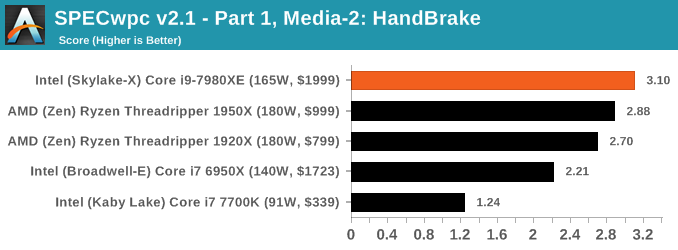
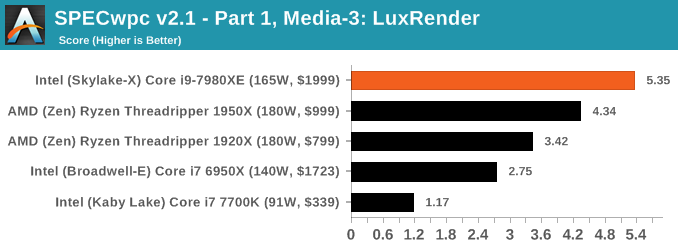
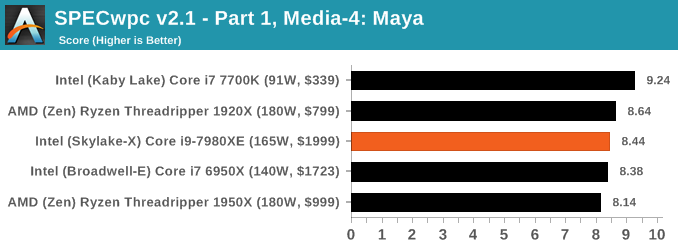
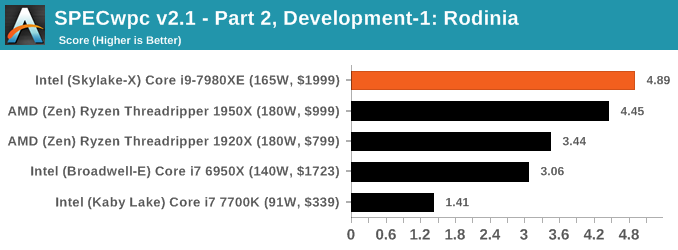
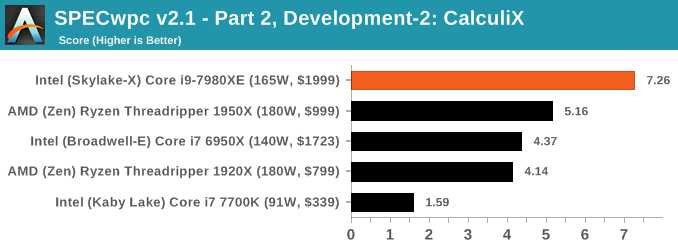
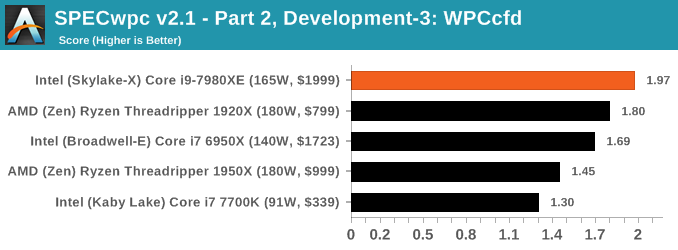
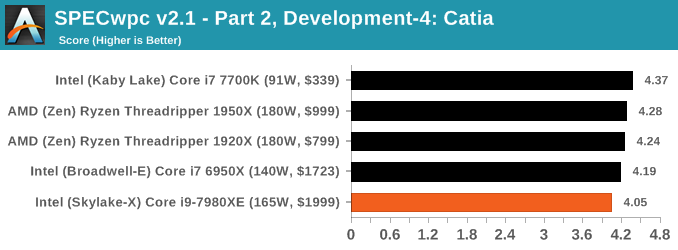
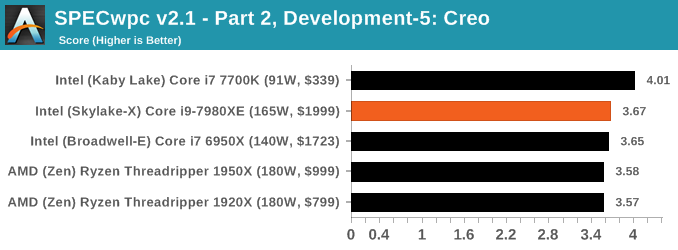
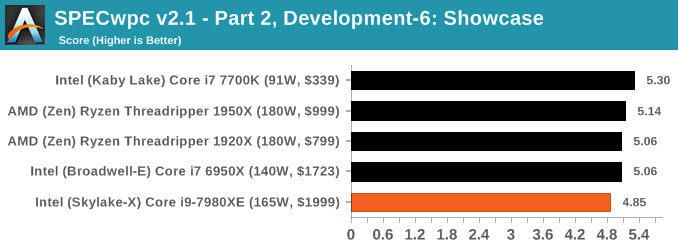
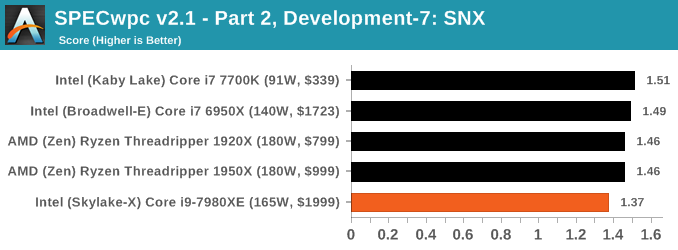

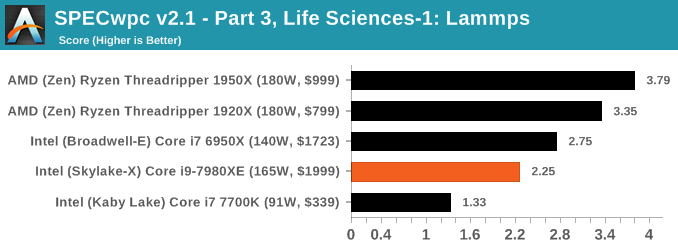

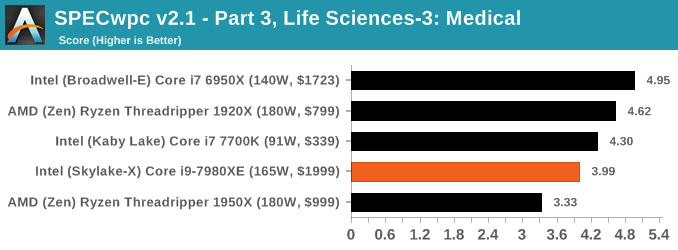
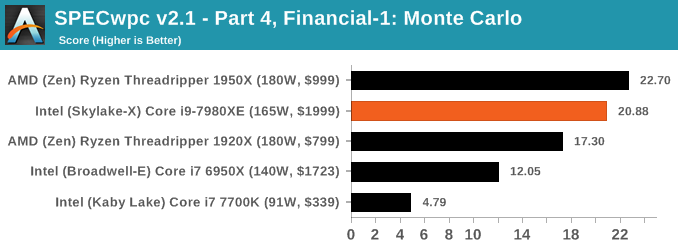
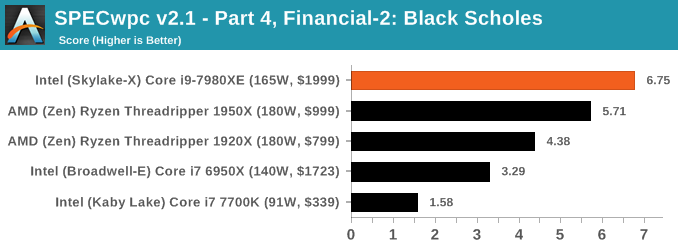

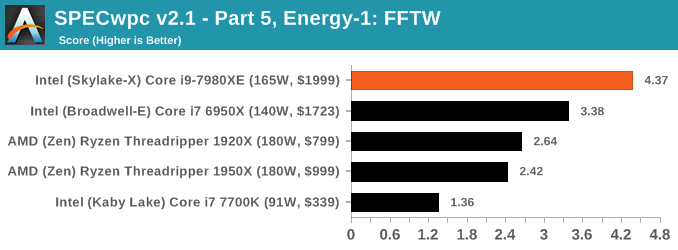
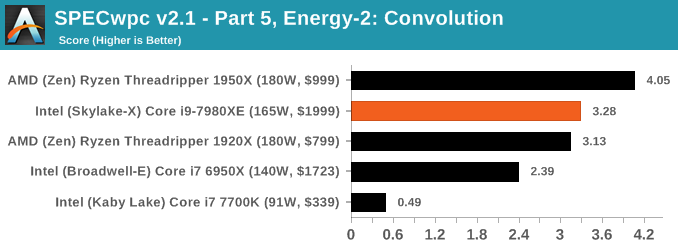
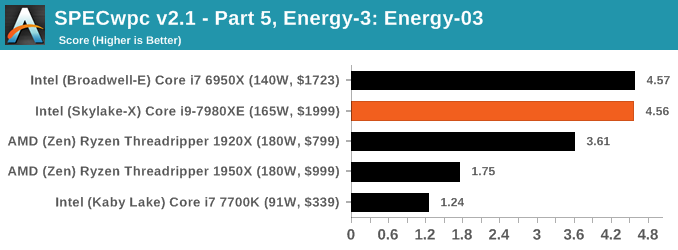

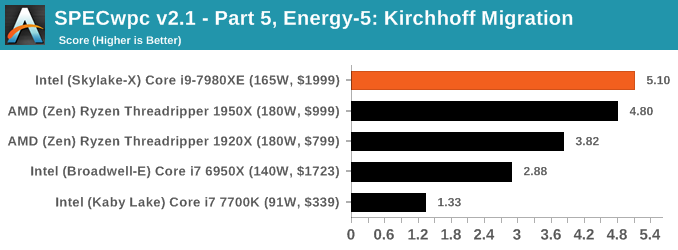
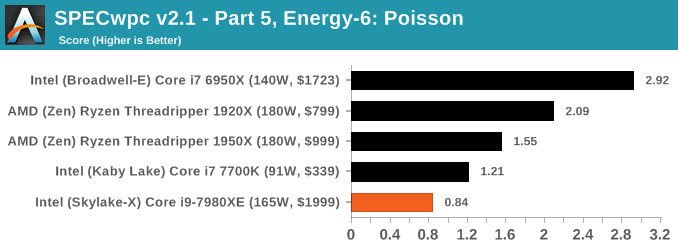
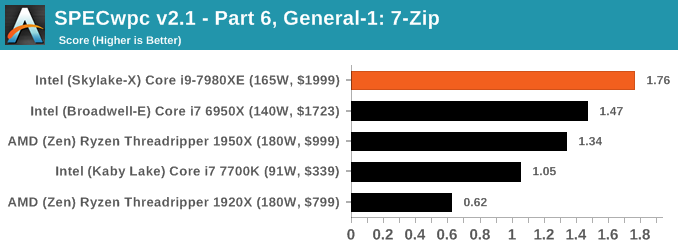
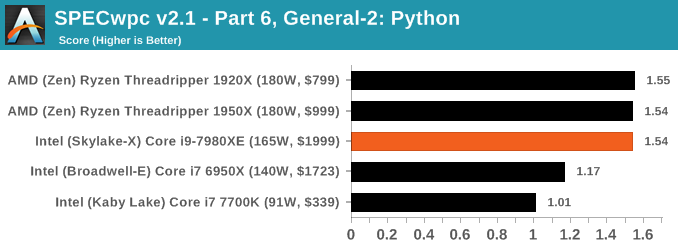











152 Comments
View All Comments
Gothmoth - Monday, September 25, 2017 - link
well i did not notice as much bias and other stuff when anand was still here.Spunjji - Monday, September 25, 2017 - link
Seriously..? Ever read any of the Apple product reviews? :Dandrewaggb - Monday, September 25, 2017 - link
lol, I was going to say that too. Anand had (in my opinion) a clear apple bias at the end and then went to work for them. That's not to say apple wasn't making good products or not doing interesting things - they were one of the few tech companies doing anything interesting.Notmyusualid - Tuesday, September 26, 2017 - link
+1tipoo - Tuesday, September 26, 2017 - link
I mean, imo he was pretty fair about them, he liked them and didn't say they were utter garbage because they tend not to make utter garbage. He did point out flaws fairly.flyingpants1 - Tuesday, September 26, 2017 - link
Yes that is the general consensus around here.Some of the podcasts with Anand and Brian Klug were embarrassing, they had a third guy but they would just talk over him. Brian was this really obnoxious guy who made fun of people who want removable batteries and microSD cards, he said "You got what you got!"
lmao... industry shills.. wants to save the companies 10 cents for a microSD slot, and force people to overpay for 12GB space plus data usage.. How are you supposed to shoot 4k video and keep a movie/TV database with that. 128gb microSD card is perfect. Meanwhile they add ridiculous nonsense like taptic engine and face scanning instead of making the battery a bit thicker
FreckledTrout - Monday, September 25, 2017 - link
I do because they know a disproportionate amount of their user base is tech savvy and run ad blockers with one click will en mass black block adds. Keep the adds clean and we leave the blockers off....we help each other but it is a give and take.damianrobertjones - Saturday, September 30, 2017 - link
Did you know that capitals can be your friend!ddriver - Monday, September 25, 2017 - link
Workstation without ECC... that's a bad joke right there. Or at best, some very casual workstation. But hey, if you like losing data, time and money - be my guest. Twice the memory channels, and usually all dims would be populated in a workstation scenario, that's plenty of ram to get faulty and ruin tons of potentially important data.Also, what ads? Haven't you heard of uBlock :)
"Explaining the Jump to Using HCC Silicon" - basically the only way for intel to avoid embarrassment. Which they did in a truly embarrassing way - by gutting the ECC support out of silicon that already has it.
AVX512 - all good, but it will take a lot of time before software catches up. Kudos to intel for doing the early pioneering for once.
At that price - thanks but no thanks. At that price point, you might as well skip TR and go EPYC. Performance advantages, where intel has them, are hardly worth the price premium. You also get more IO on top of not supporting a vile, greedy, anticompetitive monopoly that has held progress back for decades so it can milk it. But hey, as AT seems to hint it, you have got to buy intel not to be considered a poor peasant who can't afford it. I guess being dumb enough to not value your money is a good thing if it sends your money in intel's pocket.
nowayandnohow - Monday, September 25, 2017 - link
"Haven't you heard of uBlock :)"Haven't you heard that this site isn't free to run, and some of us support anandtech by letting them display ads?